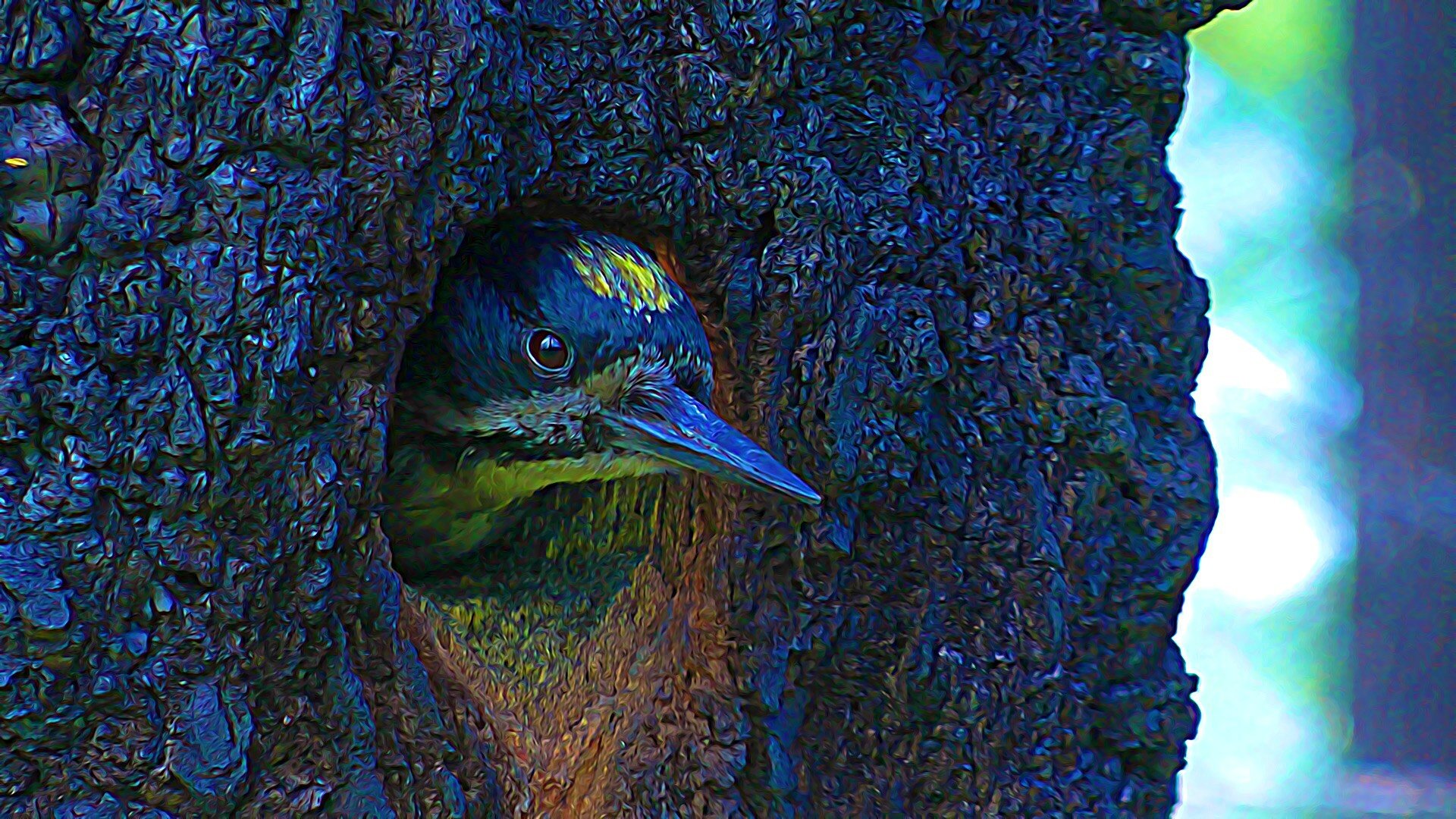- A new video documentary released this week describes the important positive ecological effects of high-severity forest fires.
- High-severity forest fires, also called stand-replacing or crown fires, create rare and important wildlife habitat, and many species of plants and animals reach their highest abundances only in these blackened ‘snag forests’.
- Fear of high-severity forest fires is often used to scare people into supporting ecologically damaging logging operations billed as ‘thinning to reduce fuels’ or ‘post-fire restoration,’ but these logging projects destroy important wildlife habitat and do not effectively protect homes or communities.
A short documentary film was released this week that gives the U.S. Forest Service spokes-bear, Smokey, a positive new message about forest fires in the American west. The video A New Message For Smokey describes how high-severity forest fires, also called stand-replacing or crown fires, create rare and important wildlife habitat. Most Americans can recite Smokey’s old slogan, but the filmmakers hope viewers will embrace the ecological truth behind a new credo, “Forest fire creates wildlife habitat.”
Monica Bond, principal scientist at Wild Nature Institute and the film’s writer said, “Many species of plants and animals reach their highest abundances only in the blackened ‘snag forests’ created by stand-replacing forest fires, and this overwhelming positive response shows that high-severity crown fire has been a natural part of western forests for thousands of years. Unfortunately, the budget of the U.S. Forest Service is linked to logging and forest fire suppression, so they use forest fires to scare people into supporting ecologically damaging logging operations billed as ‘thinning to reduce fuels’ or ‘post-fire restoration,’ but these logging projects destroy important wildlife habitat and do not effectively protect homes or communities.”
The film was a co-production of two wildlife conservation organizations, the Wild Nature Institute, a scientific research and education organization, and Wild Lens, a video production company focused on addressing wildlife issues. Matthew Podolsky, president of Wild Lens said, “At Wild Lens we are always striving to produce content that can be used to positively influence the outcome of conservation issues. We love our collaboration with the Wild Nature Institute because they share our passion for conservation, and understand the importance of conveying their scientific findings to a broad audience that goes beyond the scientific community. We hope that A New Message for Smokey will play a role in shifting the way people view forest fire, by demonstrating the ecological importance of the hottest, most intense wildfires.”
The film draws upon the body of scientific research accumulated over the past few decades that describes the normal and ecologically necessary nature of high-severity fire in western U.S. forests. A growing consensus among forest scientists has embraced the inevitability of stand-replacing fires, and how important and rare the resultant snag forests are to forest health and biodiversity. The many native plant and animal species that have positive responses to high-severity fire indicates that they evolved to take advantage of the ecological conditions created in stand-replacing fires. The best available science also has clearly demonstrated that homes and communities are best protected by maintaining defensible space within 100 feet around structures, while logging in the name of reducing forest fire risk is generally ineffective.

